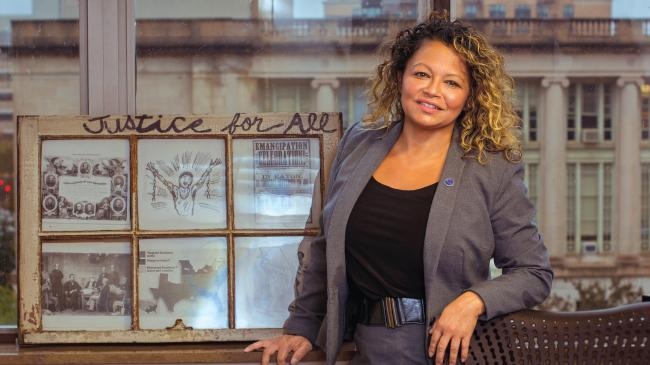As we approach the end of 2016, we will remember this as the year we faced the reality of race relations across the country and in our city. The topic of race relations was at the forefront of the presidential campaigns and an issue that law enforcement agencies grappled with nationwide. Police shootings of unarmed black men and civilian shootings of officers have sparked overdue conversations about race.

These tragedies happened in rapid succession. Video images captured the North Carolina police shooting of an unarmed black man in the back, as well as the killings in Dallas, where police were targeted. These alarming incidents, and others too numerous to mention, have heightened the need to transform how communities are policed in an ever-growing multicultural society that is faced with challenges of poverty and crime. We need to set our priorities through a racial-equity lens that ensures we do not continue to contribute to the social inequities we are experiencing today. We are witnessing a divide that has impacted the families of those whose lives were lost—whether at the hands of police officers or citizens, regardless of motive.
The city of Madison is a microcosm of what is happening across the country. It, too, is facing challenges surrounding tragic incidents of police officer-involved shootings and police use-of-force incidents. These situations have exposed an underlying mistrust and broken system of transparency among segments of our communities of color and law enforcement.
Across the city, there have been conversations, debates, news reports and news conferences about disparity data showing that black and Latino residents are falling behind in areas of education and employment while incarceration rates are high. We, as a community, feel a sense of urgency to respond and fix a broken system.
Our police officers are exposed to the impacts of inequities in all these areas. They respond to calls to protect and serve a community that is often in crisis due to inequality. We rely on them to be social workers, mental health liaisons, neighborhood officers and friends in blue. When I was on the Madison police force, I worked alongside fellow officers who served our community and wore the many different hats they are expected to wear, and they did so with compassion and integrity.
However, because officers are entrusted with the highest responsibility of protecting and serving our most vulnerable communities and making split-second decisions on human life, there must be strict oversight of policies, procedures and practices within the law enforcement profession.
The distrust between our black community and law enforcement runs deep. We are reminded of our past—a past that did not allow us to heal. A past in which Civil Rights legislation was enacted to protect us from injustices but does nothing to help us deal with the human factor of race relations and micro-aggressions of today. Legislation is an important component of achieving equity, however, while we continue to face the power dynamics of race, we will continue to get back what we put in.
As a community, we must move into 2017 with aggressive support of the good work by groups that have taken measures to face the challenges of race: the city of Madison, Dane County, Nehemiah Justified Anger, United Way of Dane County, Urban League of Greater Madison, Centro Hispano, YWCA Madison, Madison Metropolitan School District, the Race to Equity project and many other organizations that have become active participants in the transformative change needed to move us toward a more equitable community—one that includes an evaluation of what policing looks like in our community today and in the future.
As part of this process, we also need to:
◆ Improve training on micro-aggressions and implicit bias. We also need to ensure that we are recruiting officers of diverse backgrounds who understand the challenges facing communities of color.
◆ Hold honest and open dialogues between police and communities of color. We may not agree on everything, but we need to establish understanding and try to view things through each other’s lenses.
◆ Deal aggressively with the underlying challenges within the police profession, and identify and call out the subculture within police departments that feed into bias and racism. We also need to establish policies that allow officers to report officer misconduct without fear of retaliation.
◆ Continuously review police policies and procedures, training and use of force. There should be a focus on training in de-escalation techniques through scenario-based instruction. Our government representatives need to understand and focus on evaluating our state standards and make changes through legislation.
◆ Encourage more communities to follow the recommendations of President Barack Obama’s 21st Century Policing Pillars that include building trust and legitimacy, policy and oversight, technology and social media, community policing and crime reduction, training and education, and officer wellness and safety. The city of Madison has already evaluated and incorporated many of these pillars into its policies and procedures.
Public safety does not always equal more police officers, prisons or jails. Public safety is also investing in neighborhood associations and watches, neighborhood centers, anti-violence strategies, youth employment and reengagement efforts of our young adults who have dropped out of school.
The challenges we face as a community reflect racial inequality, which leads to problems that require police response. But it’s not a problem only for police officers to solve. We are all responsible for the well-being of people in our city.
I hope 2017 brings opportunities for healing, justice and understanding as we work together for a safe community for all.




























